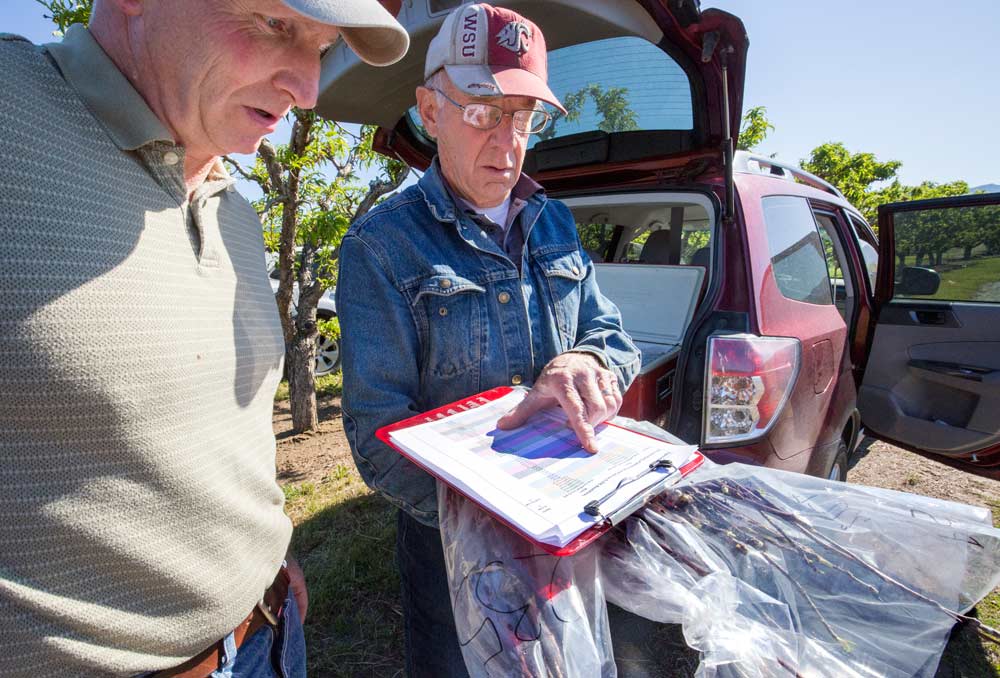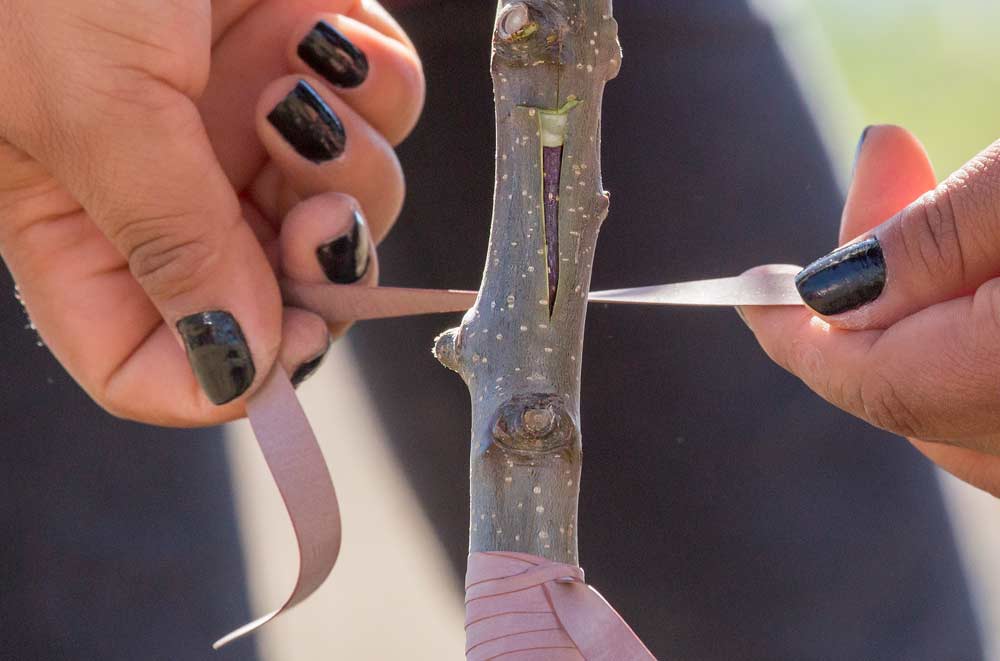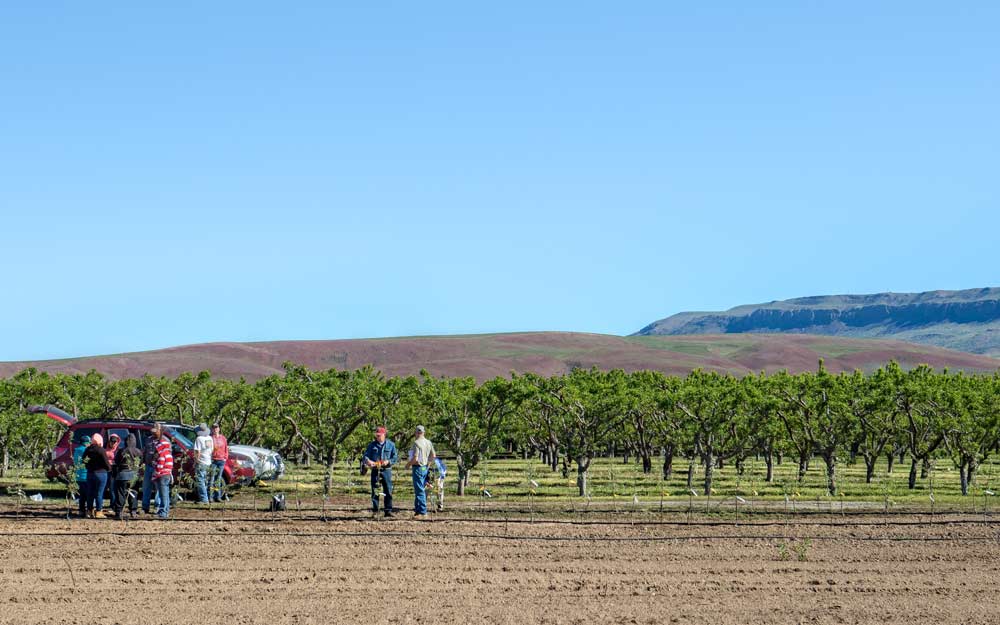
Ric Van Well, left, and Bill Howell look over a list of Geneva 935 rootstocks to be inoculated at the beginning of virus trials at Van Well Nursery in Wenatchee, Washington, in May. Howell, from Northwest Nursery Improvement Institute, and Van Well are conducting tests to learn more about why G.935, along with a few other Geneva rootstocks, struggle with several common apple viruses. (TJ Mullinax/Good Fruit Grower)
In two long rows of baby trees at Van Well Nursery in Wenatchee, Washington, researchers have begun trials to figure out why some apple varieties don’t like the Geneva 935 rootstock.
In recent years, certain apple strains — notably, red strains of Honeycrisp — have been developing tree decline when grafted onto G.935, one of eight Cornell University rootstocks prized for their precocity and resistance to fire blight. Some growers have had to rip out entire blocks after their trees failed to grow and developed splotchy, sick-looking leaves.
Experts suspect a virus or a combination of viruses, but researchers haven’t carved that in stone yet, said Bill Howell, manager of the Northwest Nursery Improvement Institute, an organization through which tree fruit nurseries fund research projects and manage varieties.

A bark chip infected with apple viruses is inserted into a T-graft cut in a healthy Geneva 935 rootstock, which is then wrapped to secure the graft. The trial, at Van Well Nursery in Wenatchee, Washington, is being done to figure out why some apple varieties fail after being grafted to G.935. (TJ Mullinax/Good Fruit Grower)
To test the theory, Van Well crews in May grafted wood and bark chips from trees infected with common viruses and from Royal Red Honeycrisps onto trees on G.935 roots to compare how they develop symptoms over the next year, or even two years.
“It’s common in the tree industry,” Howell said with a smile. “You plant and you wait.”
If a virus is behind the mysterious illness, symptoms should develop as that virus spreads from the Royal Red grafts into the young trees.
The known virus treatments might by comparison indicate which viruses, if any, could be involved. The known virus line-up includes apple chlorotic leaf spot, apple stem grooving, apple stem pitting and a combination of chlorotic leaf spot and stem pitting.
They grafted Royal Reds and the same viruses onto Gala trees on G.935 and Geneva 41 roots as controls. Galas, Fujis and other varieties have grown without trouble on G.935.

Bill Howell, in red hat, Ric and Pete Van Well mark Geneva 935 rootstocks before they are inoculated with viruses during a trial at Van Well Nursery in Wenatchee, Washington. (TJ Mullinax/Good Fruit Grower)
Researchers in Geneva, New York, are on board with the trials, which go beyond their own extensive tests. In those, G.935 performed well and did not develop diseases, said Gennaro Fazio, a U.S. Department of Agriculture plant geneticist in Geneva, who partners with Cornell on the rootstock breeding project.
“I think these trials will go a long way to explain some things and link the virus issue with this particular incident,” he said.
At Fazio’s request, Howell also is running trials on some of the siblings of G.935: G.890, G.969 and G.214.
The Nursery Improvement Institute is paying for the project, including the virus testing at the Clean Plant Center Northwest in Prosser, Washington, which provided the known viruses. Van Well Nursery is hosting the trials but several nurseries contributed trees, which were planted in April this year.
Ric Van Well, president of the institute, does not fault Cornell University for the problems with G.935. It’s impossible to test for everything in the complex genetic world of tree fruit, he said. Pairings of certain cherry varieties on Gisela rootstocks have failed unexpectedly, too.
“You can’t really test for everything in a lab, so I don’t blame them,” Van Well said. “The growers are always saying, ‘Hey, we want this right now.’ So you’re pushing that out to give the growers what they want.” •
-by Ross Courtney






Leave A Comment